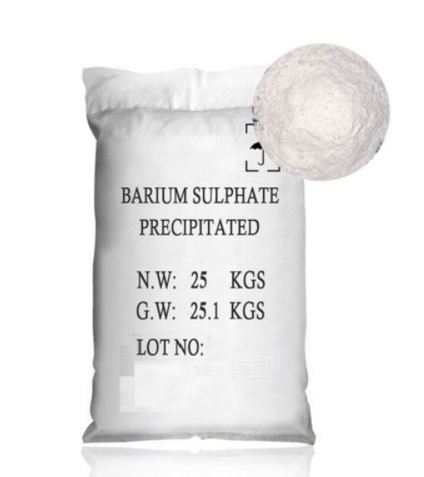The Production Process Of Barium Sulfate
Barium sulfate is an important chemical raw material, in addition to the pharmaceutical industry is also widely used in the production of barium salt industrial products and oil and gas extraction to.
Barium sulphate is an important chemical raw material, in addition to the pharmaceutical industry is also widely used in the production of barium salt industrial products and oil and gas extraction to.
How is barium sulphate produced?
1. Calcination: Calcination of barite ore at 700℃-800℃.
2. debinding: mix 10% hydrochloric acid solution with calcined barite monomer in an indoor pile, its pile time is 3-7 days.
3. beneficiation: beneficiation by shaking bed.
4. Baking dry: Baking dry the selected barium sulphate monomer with water until the water is dried.
5. Crushing and packing. The process can also add a high-temperature calcination process between baking dry and crushing process, and the calcination temperature is about 1500℃.
Natural barium sulphate, namely barite, is a non-metallic mineral product. Pure barite is white in color (yellow, red or gray-brown when impure) and has a glass luster. Barite crystal grains are crystalline, with a rhombohedral crystal structure. Specific gravity 4.5, Mohs hardness 3-3.5, melting point 1480℃. At present, there are two types of production methods of barium sulphate. One is obtained by using barite after washing, debinding and grading, and then crushing and processing. And the method of refining natural barium sulphate with the purpose of increasing its purity as much as possible is found in the relevant scattered literature, that is, the process of obtaining refined natural barium sulphate after wet acid-base purification, whitening, washing and filtration: among them, the specific treatment process of the commonly used wet acid-base purification is to add the natural barium sulphate to be purified to a certain concentration of sodium hydroxide solution, and some of the impurities react under high-temperature conditions to produce products soluble in water. The other part of impurities do not react or generate water-insoluble hydroxide, and then soak it with hydrochloric acid to convert it into water-soluble chloride, and the resulting slurry is filtered and washed to obtain high-purity natural barium sulphate; whitening is the process of adding even sodium dithionite to the slurry made of high-purity natural barium sulphate powder with a certain solid-liquid ratio, and stirring at a certain speed for tens of minutes and then separating.
Barium carbonate-sulfuric acid method
The industrial barium carbonate is firstly beaten with water to control the solid mass fraction of about 40%, and then slowly added to 30% of the sulfuric acid solution with constant stirring, and it should be observed at any time while stirring during the process of adding material to prevent the phenomenon of bubbling can. After adding the material, continue to stir for 30 min to make the barium carbonate fully react, and then filter and wash, slurry, spray dry and pack into products. Because a large number of carbon dioxide bubbles are generated in this reaction process, the reaction between the liquid and solid phases is carried out on the surface of the bubbles with large specific surface area, which makes the solid barium sulphate produced with small particles and narrow particle size distribution and speeds up the reaction process.
The precipitated barium sulphate produced by this process has high whiteness, the whiteness of building materials is above 98, few impurities, low free barium content, no smell of hydrogen sulfide, easy to disperse, narrow particle size distribution, high specific surface area, and high gloss coating film can be obtained. Although the production cost is high, due to the high quality of the product produced by this method, the market positioning is high, and its profit is considerable.
We are a barium sulphate supplier, please feel free to contact us if you need them.
